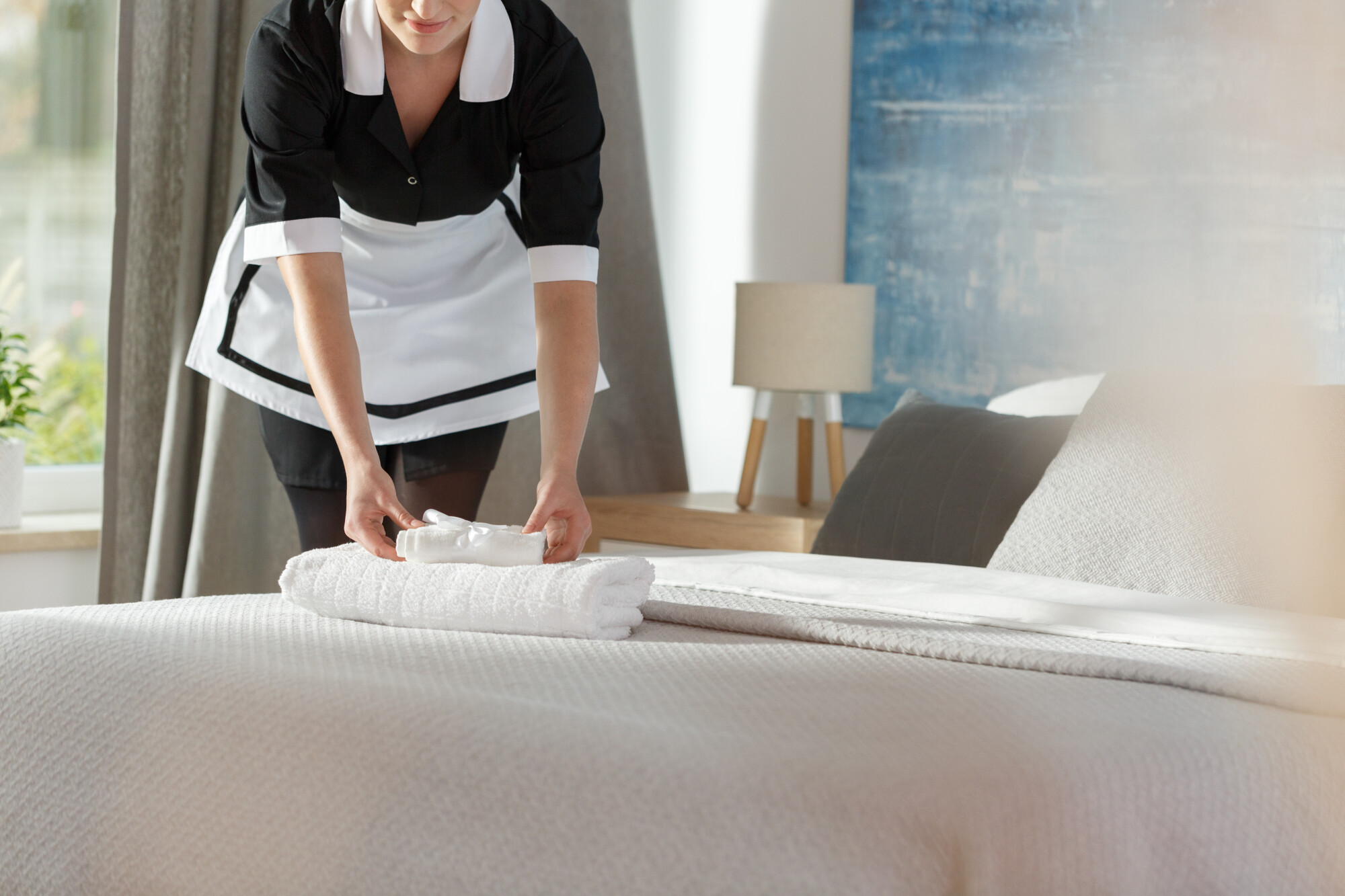
The Art of Window Cleaning: Achieving Sparkling Windows Like a Pro
Clean windows play a pivotal role in enhancing the overall appearance and aesthetic appeal of a home. They allow natural light to pour in, creating an atmosphere of brightness and freshness. Whether you’re welcoming guests, enjoying a peaceful afternoon, or simply admiring the view, sparkling windows can transform an ordinary space into a captivating one. Our purpose is not only to enlighten you about the significance of clean windows but also to empower you to become a master of the craft. We recognize that window cleaning is a meticulous task that requires the right approach, tools, and techniques. With our guidance, you will learn the step-by-step process of achieving flawless windows that will undoubtedly elevate the overall appeal of your home!
Understanding the Basics of Window Cleaning
When it comes to window cleaning, a systematic approach is key to achieving exceptional results. A haphazard or careless approach can leave behind streaks, smudges, and missed spots, diminishing the overall impact of your efforts. Therefore, it is crucial to understand the importance of a methodical and organized process that will leave your windows gleaming with perfection.
Before you embark on your window cleaning journey, it is essential to gather all the necessary supplies and tools. This will ensure that you have everything at your fingertips, avoiding interruptions and the frustration of searching for items mid-task. Some of the basic supplies you will need include a bucket, squeegee, microfiber cloth, cleaning solution, and a ladder or extension pole for those hard-to-reach windows. Having these items ready beforehand will streamline your cleaning process and make it more efficient.
Once you have gathered your supplies, it’s time to prepare the windows and the surrounding areas for cleaning. Start by removing any blinds, curtains, or other window coverings that might obstruct your access. Take a moment to dust the window frames, sills, and tracks, removing any loose dirt or debris that could interfere with your cleaning process. This step will ensure that your windows receive the attention they deserve and will minimize the chances of dirt or dust getting transferred back onto the glass.
Additionally, consider protecting the surrounding areas, especially if you’re using a liquid cleaning solution. Lay down a towel or plastic sheeting to safeguard the floor or furniture from potential drips or spills. This precautionary measure will save you from the hassle of cleaning up unintended messes and will maintain the cleanliness of your home throughout the window cleaning process.
Properly Washing the Windows
To achieve streak-free, pristine windows, it is essential to employ the right cleaning solution and tools, coupled with the correct technique for washing windows. This combination will ensure that you remove dirt, grime, and smudges effectively, leaving your windows with a crystal-clear brilliance that enhances the overall beauty of your home.
First and foremost, selecting the appropriate cleaning solution is crucial. There are various options available in the market, including specialized window cleaning solutions and homemade alternatives. Choose a mild detergent or a specialized window cleaning solution that is specifically formulated to cut through grease and dirt without leaving residue behind. This will provide you with optimal cleaning power without compromising the integrity of your windows.
Once you have your cleaning solution ready, it’s time to gather the necessary tools. A high-quality squeegee and a microfiber cloth are your best allies in achieving a flawless finish. The squeegee allows you to effectively remove the cleaning solution from the glass, eliminating streaks and ensuring a smooth, even surface. On the other hand, a microfiber cloth is perfect for drying the edges and corners of the window, ensuring that no moisture is left behind.
Now that you have your cleaning solution and tools in hand, it’s time to demonstrate the correct technique for washing windows. Start by wetting the glass with the cleaning solution. Be generous with the amount, but avoid excessive saturation that could lead to dripping or running. Using the squeegee, start from the top corner of the window and work your way down in a continuous motion. Apply gentle pressure as you pull the squeegee across the glass, ensuring that the rubber edge maintains contact with the surface. After each stroke, wipe the blade of the squeegee with a clean cloth to remove any residue or excess moisture.
Once you have completed the main surface of the window, it’s time to address the edges and corners. Take your microfiber cloth and carefully dry these areas, making sure to reach into every nook and cranny. This step is essential for achieving a streak-free finish and leaving no trace of moisture behind.
Dealing with Stubborn Streaks and Stains
Despite our best efforts, windows can sometimes present us with stubborn streaks and stains that refuse to vanish with the usual cleaning techniques. Understanding the common causes of these blemishes and having effective methods to remove them will empower you to tackle even the most tenacious marks and restore your windows to their pristine glory.
To effectively deal with stubborn streaks and stains, it is crucial to identify their common causes. One frequent culprit is the accumulation of dirt, dust, and grime on the windows. These particles can adhere to the glass, creating unsightly streaks that mar the transparency of your windows. Additionally, hard water deposits can leave mineral stains, especially in areas with high mineral content in the water supply. Other potential causes include residue from cleaning solutions or previous cleaning attempts that were not properly rinsed off.
Now that you understand the causes, let’s explore some effective methods to remove these stubborn marks and restore your windows to their sparkling state. One powerful solution is to use a vinegar-based cleaning solution. Mix equal parts of distilled vinegar and water in a spray bottle, and apply it generously to the affected areas. Let the solution sit for a few minutes to loosen the stains, and then use a microfiber cloth or sponge to gently scrub the area. Rinse thoroughly with clean water and dry with a lint-free cloth.
For particularly stubborn stains, another effective method is to use a specialized window stain remover. These products are specifically formulated to dissolve and remove tough stains, such as mineral deposits and hard water marks. Follow the instructions on the label and apply the stain remover to the affected areas. Allow the product to work its magic for the recommended duration, and then rinse off thoroughly with water. Be sure to read and follow all safety precautions and guidelines provided by the manufacturer.
In some cases, a combination of techniques may be required to tackle different types of stains. For instance, a stubborn residue from a cleaning solution can be effectively removed by using a vinegar solution followed by a thorough rinse with water.
Choosing the Right Tools and Products
When it comes to window cleaning, having the right tools and products at your disposal can make a world of difference in achieving optimal results. In this section, we will explore a range of window cleaning tools and their specific purposes, as well as recommend high-quality cleaning products that will elevate your window cleaning endeavors to new heights.
Tool 1: Squeegees and Microfiber Cloths
When it comes to achieving streak-free, flawless windows, squeegees and microfiber cloths are two indispensable tools that will elevate your window cleaning game to a professional level. In this section, we will explore the advantages of using these tools and provide guidance on their proper usage techniques, ensuring that you maximize their effectiveness in achieving sparkling results.
Squeegees offer several advantages when it comes to window cleaning. Firstly, they allow for efficient and effective removal of cleaning solutions from the glass surface. The rubber blade of the squeegee glides smoothly across the glass, effectively wiping away the cleaning solution and leaving behind a streak-free finish. This method of removal ensures that there are no drips or excess liquid left on the windows, minimizing the chances of streaks or smudges.
Another advantage of squeegees is their ability to cover large surface areas quickly. With a few swipes of the squeegee, you can effortlessly clean a significant portion of the window, making the process faster and more efficient. This is especially beneficial when dealing with multiple windows or larger glass surfaces.
Microfiber cloths, on the other hand, excel in drying and polishing windows to perfection. These soft and absorbent cloths are designed to trap and hold onto moisture, ensuring that your windows are left dry and streak-free. The fibers of the cloth are gentle and non-abrasive, minimizing the risk of scratching or damaging the glass surface. Additionally, microfiber cloths are lint-free, further reducing the chances of leaving behind unwanted residue.
When using squeegees and microfiber cloths, it is important to follow proper usage techniques for optimal results. Start by wetting the window with your chosen cleaning solution, ensuring that the glass is evenly coated. Then, take the squeegee and begin at the top corner of the window. With a firm yet gentle grip, pull the squeegee across the glass in a continuous motion, overlapping each stroke slightly. After each stroke, wipe the rubber blade of the squeegee with a clean cloth to remove any residue or excess moisture. Continue this process until you have covered the entire window.
Once you have completed the squeegee step, it’s time to employ the microfiber cloth for the finishing touch. Take a clean and dry microfiber cloth and gently wipe the edges and corners of the window, ensuring that all remaining moisture is absorbed. Pay special attention to any areas that may still have streaks or moisture. The soft fibers of the cloth will leave your windows gleaming and crystal clear.
Tool 2: Extension Poles and Ladders
When it comes to cleaning high windows or windows in hard-to-reach areas, extension poles and ladders become invaluable tools. In this section, we will discuss the benefits of using these tools, along with important considerations to ensure safety while cleaning those elevated windows.
Extension poles offer several benefits when it comes to reaching high windows. They allow you to extend your reach without the need for a ladder, providing convenience and stability. With an adjustable extension pole, you can customize the length to suit the height of the windows, ensuring that you have optimal control and access to the entire glass surface.
One of the key advantages of using an extension pole is that it reduces the risk associated with working at heights. By eliminating the need to climb a ladder or balance on precarious surfaces, extension poles offer a safer alternative for reaching high windows. This is particularly beneficial when dealing with multi-story homes or windows located in areas with limited access.
Ladders, on the other hand, are essential when extension poles alone cannot reach the desired height. When using a ladder, it is crucial to prioritize safety above all else. Ensure that the ladder is stable and on a level surface before climbing. Use a ladder with the appropriate height and weight capacity for your needs, and never stand on the top rung or overreach while on the ladder. It is also advisable to have a spotter or someone to assist you, especially when working with taller ladders or when cleaning windows at elevated heights.
While using extension poles and ladders, safety should be your utmost concern. Make sure to wear appropriate footwear with good grip to maintain stability. Avoid overextending your reach or leaning too far, as it can compromise your balance and increase the risk of accidents. It’s also important to be mindful of any obstacles or hazards in your surroundings, such as power lines or nearby structures, that may interfere with your work.
Consider using a safety harness or securing the extension pole to your body for added stability when cleaning high windows. These precautions can provide an extra layer of protection, ensuring that you can clean your windows with confidence and peace of mind.
By utilizing extension poles and ladders, you gain the ability to reach high or difficult-to-access windows, expanding your cleaning capabilities. However, it is essential to prioritize safety and take necessary precautions when working at heights. By following proper safety guidelines, you can ensure a secure and accident-free window cleaning experience.
Remember, your safety should always come first. If you are uncomfortable or unsure about using ladders or extension poles, it may be advisable to seek professional window cleaning services for those high or hard-to-reach windows. Prioritizing safety is paramount, and seeking professional assistance is a wise decision when needed.
Product Recommendations for Optimal Results
When it comes to achieving optimal window cleaning results, the choice of cleaning solutions and detergents plays a crucial role. In this section, we will review top-rated window cleaning products and discuss eco-friendly and homemade alternatives that can help you achieve sparkling, streak-free windows.
- Specialized Window Cleaning Solutions: There are various specialized window cleaning solutions available in the market, specifically formulated to cut through dirt, grime, and grease without leaving streaks or residue behind. These solutions often contain ingredients that enhance the cleaning power and ensure a crystal-clear finish. Look for reputable brands that have a track record of producing effective and reliable window cleaning solutions.
- Mild Detergents: Another option for achieving optimal results is to use mild detergents that are safe for use on glass surfaces. These detergents are typically gentle yet effective in removing dirt and grime. Ensure that the detergent does not contain harsh chemicals that could potentially damage the glass. Dilute the detergent according to the manufacturer’s instructions and use it in conjunction with the proper tools and techniques for best results.
- Vinegar-Based Solutions: For those who prefer eco-friendly alternatives, vinegar-based solutions are an excellent choice. Vinegar is a natural, affordable, and versatile cleaning agent that can cut through grease, dirt, and even some stubborn stains. Mix equal parts distilled vinegar and water to create a potent cleaning solution. The acidity of the vinegar helps dissolve grime and leaves your windows sparkling clean. Additionally, vinegar is safe to use on most glass surfaces and does not leave behind any harmful residues.
- Homemade Alternatives: Aside from vinegar, there are other homemade alternatives that can yield great results. For example, a solution of warm water and dish soap can be effective in removing dirt and grease from windows. Ensure that the dish soap is mild and does not contain harsh additives. Another option is a mixture of lemon juice and water, which can add a pleasant fragrance while providing cleaning power. Experiment with different homemade solutions to find the one that works best for your needs.
When choosing a cleaning product, keep in mind the specific needs of your windows and the surrounding environment. If you have windows with delicate finishes or coatings, consult the manufacturer’s recommendations before using any cleaning solution. Additionally, consider any allergies or sensitivities that you or your household members may have when selecting products.
To ensure optimal results, follow the instructions provided by the manufacturer for each cleaning solution or detergent. Use the appropriate amount and apply it evenly to the glass surface. Pair the cleaning product with the right tools, such as squeegees and microfiber cloths, for maximum efficiency and effectiveness.
Window Cleaning Tips and Tricks
In addition to the fundamental techniques and tools, there are several additional tips and tricks that can take your window cleaning endeavors to the next level. These insights, born from experience and expertise, will enable you to achieve professional results and address common challenges that may arise during the window cleaning process. Let’s explore these valuable tips and tricks together!
Tip 1: Cleaning windows on a cloudy day
may seem counterintuitive, but it is actually an ideal time to achieve optimal results. Overcast days offer certain advantages that maximize the efficiency and effectiveness of your window cleaning efforts. Let’s explore why cleaning windows on a cloudy day is recommended and how it can lead to sparkling, streak-free results.
When the sun is hidden behind clouds, there are two primary benefits for window cleaning. First, the absence of direct sunlight prevents the cleaning solution from drying too quickly on the glass surface. Sunlight can cause the cleaning solution to evaporate rapidly, leaving behind unsightly streaks and smudges. By choosing to clean on a cloudy day, you allow yourself more time to work with the cleaning solution before it begins to dry.
Secondly, the diffused light on a cloudy day provides a better visual assessment of the cleanliness of your windows. Direct sunlight can sometimes create a glare that makes it difficult to identify streaks or missed spots while cleaning. By cleaning on a cloudy day, the softer light enables you to spot any imperfections more easily, ensuring that you achieve a thorough and streak-free finish.
Furthermore, cleaning windows on a cloudy day allows you to focus solely on the task at hand without the discomfort of working under direct sunlight. Sunlight can be intense, especially during hot summer days, making the cleaning process more physically demanding and potentially leading to fatigue. By opting for a cloudy day, you can work more comfortably and dedicate your energy to achieving meticulous results.
To maximize the efficiency of cleaning on cloudy days, it is important to have all your cleaning tools and solutions prepared beforehand. Gather your squeegees, microfiber cloths, cleaning solution, and other necessary items to ensure a seamless cleaning process. Start by applying the cleaning solution evenly across the glass surface, allowing it to penetrate and loosen dirt and grime. Then, use your squeegee to remove the solution in smooth, continuous motions, working from top to bottom. Finally, dry the edges and corners of the windows with a microfiber cloth, ensuring that no moisture or streaks are left behind.
Tip 2: Tackling Hard-to-Reach Windows
Cleaning windows in difficult-to-reach locations can present a challenge, but with the right strategies and tools, it is possible to achieve sparkling results even in the most inaccessible areas. Here are some effective strategies and alternative tools and techniques to help you tackle hard-to-reach windows with confidence and precision.
- Extension Poles: Extension poles are invaluable tools when it comes to reaching high or awkwardly positioned windows. These adjustable poles allow you to extend your reach without the need for a ladder, providing both convenience and safety. Attach a window cleaning tool, such as a squeegee or a scrubber, to the end of the extension pole, and use it to clean the glass surface effectively. The length of the pole can be adjusted to match the height of the windows, ensuring that you have optimal control and access to the entire area.
- Telescopic Window Cleaning Kits: Telescopic window cleaning kits are specially designed for cleaning windows in hard-to-reach locations. These kits typically include an extension pole with multiple attachments, such as squeegees, scrubbers, and even brushes. The telescopic feature allows you to adjust the length of the pole according to your needs, making it easier to clean windows at different heights and angles. Explore the options available in the market and choose a telescopic window cleaning kit that suits your specific requirements.
- Microfiber Cloths on Broom or Mop: For windows located in tight spaces or corners, an alternative technique involves wrapping a microfiber cloth around a broom or mop. Secure the cloth tightly and use it to reach and clean the difficult-to-access areas. The soft and absorbent properties of the microfiber cloth will help remove dirt and grime effectively while minimizing the risk of scratching or damaging the glass surface. This technique allows you to extend your reach without the need for additional tools or equipment.
- Safety Considerations: When cleaning hard-to-reach windows, it is important to prioritize safety. Ensure that you are working on a stable and level surface, and consider using safety harnesses or securing the extension pole to your body for added stability. If you encounter windows that are extremely high or pose a safety risk, it may be advisable to seek professional window cleaning services to ensure the task is performed safely and efficiently.
Remember to practice caution and assess the risks associated with each window before attempting to clean it. If you feel uncomfortable or unsure about reaching a particular window, it is always better to prioritize your safety and seek professional assistance.
Maintaining Sparkling Windows
Achieving sparkling windows is a satisfying accomplishment, but it’s equally important to maintain their cleanliness over time. Regular window maintenance plays a crucial role in prolonging the pristine appearance of your windows and preventing dirt, dust, and grime buildup. Follow these tips to maintain the sparkle and clarity of your windows for longer periods:
- Establish a Cleaning Schedule: Set a regular cleaning schedule for your windows to ensure consistent maintenance. Depending on your environment and weather conditions, aim to clean your windows at least twice a year or more frequently if needed. Regular cleaning prevents the accumulation of dirt and maintains the overall cleanliness of your windows.
- Dust and Vacuum Surrounding Areas: Before cleaning the windows, take the time to dust and vacuum the surrounding areas. Dust can accumulate on window sills, frames, and tracks, which can easily transfer onto the glass during the cleaning process. Removing loose dirt and debris from these areas will help prevent it from ending up on your freshly cleaned windows.
- Use Protective Window Treatments: Consider using window treatments such as blinds, curtains, or UV-protective films to shield your windows from excessive dirt, dust, and sunlight. These treatments help minimize the buildup of dirt and protect the glass from damage caused by direct sunlight. Regularly clean and maintain these treatments to prevent them from becoming a source of dirt and grime themselves.
- Wipe Down Windowsills and Frames: Along with cleaning the glass, pay attention to the windowsills and frames. Wipe them down with a damp cloth or sponge to remove any accumulated dirt or residue. Regular maintenance of these areas ensures that dirt or grime does not transfer back onto the glass, preserving the cleanliness of your windows.
- Inspect and Repair Sealants: Periodically inspect the sealants around your windows to ensure they are intact and in good condition. Damaged or deteriorating sealants can allow water or moisture to seep in, leading to mold growth or stains on the glass. Promptly repair any damaged sealants to maintain the integrity of your windows and prevent unnecessary buildup.
- Clean Window Screens: If your windows have screens, it’s important to clean and maintain them as well. Remove the screens and gently wash them with a mild detergent or soapy water. Rinse thoroughly and allow them to dry before reattaching them to the windows. Clean screens ensure better airflow and prevent the buildup of dirt or debris that can transfer onto the glass.
- Regularly Inspect and Clean Window Hardware: Don’t forget to pay attention to the hardware components of your windows, such as handles, locks, and hinges. Regularly inspect and clean these parts to remove dirt, grime, or debris that may accumulate over time. Lubricate moving parts with a silicone-based lubricant to ensure smooth operation.
Establishing a Cleaning Schedule
Maintaining clean windows requires a consistent cleaning schedule that incorporates regular upkeep and addresses various aspects of window care. By breaking down tasks into weekly, monthly, and seasonal cleaning routines, you can ensure that your windows remain sparkling and free from dirt, dust, and grime. Follow this recommended cleaning schedule to maintain the cleanliness and beauty of your windows throughout the year:
Weekly Tasks:
- Dust and Wipe: On a weekly basis, take a few minutes to dust and wipe down your windowsills, frames, and hardware. Use a soft cloth or duster to remove any loose dirt, dust, or cobwebs that may have accumulated. This simple step prevents the buildup of debris and helps maintain the overall cleanliness of your windows.
Monthly Tasks:
- Interior Window Cleaning: Once a month, focus on cleaning the interior side of your windows. Start by removing any window treatments, such as blinds or curtains, and launder or clean them as per their specific requirements. Dust the window sills, frames, and hardware again before applying a suitable cleaning solution to the glass. Utilize the appropriate tools, such as a squeegee and microfiber cloth, to wash and dry the windows thoroughly.
- Window Screens: Monthly, inspect and clean the window screens. Remove them from the windows and gently wash them with a mild detergent or soapy water. Rinse the screens thoroughly, allow them to dry completely, and then reinstall them. This routine maintenance ensures that your screens remain clean and free from dirt or debris that could transfer to the windows.
Seasonal Tasks:
- Exterior Window Cleaning: Twice a year, preferably during spring and autumn, dedicate time to clean the exterior side of your windows. Start by removing any loose dirt or debris from the windowsills, frames, and tracks. Use an appropriate cleaning solution and tools, such as a squeegee or extension pole, to wash and dry the exterior glass thoroughly. Take advantage of a cloudy day or a time when the windows are not in direct sunlight to avoid streaking.
- Inspect and Repair: As part of your seasonal window cleaning, perform a thorough inspection of the window components. Check for any signs of damage, such as cracked glass, damaged sealants, or malfunctioning hardware. Promptly address any issues by repairing or replacing damaged parts to maintain the integrity and functionality of your windows.
Window Protection and Preservation
Windows are vulnerable to the effects of various environmental elements, such as sunlight, rain, and pollutants. To ensure their longevity and maintain their pristine appearance, it is important to implement methods for protecting and preserving windows. In this section, we will introduce techniques for safeguarding windows from these elements and discuss the benefits of applying protective coatings.
- Window Film: Window film is a thin, transparent material that can be applied to the glass surface of windows. It provides several protective benefits, such as blocking harmful UV rays, reducing glare, and minimizing heat transfer. UV rays can cause fading and discoloration of furnishings and flooring near windows. Window film acts as a shield, blocking a significant portion of UV radiation and preserving the integrity of your interior furnishings. Additionally, it helps regulate temperature by reducing heat gain during hot summer months and retaining warmth during colder seasons.
- Weather Stripping: Properly installed weather stripping around windows plays a crucial role in preventing air and moisture infiltration. It helps create a tight seal between the window frames and the surrounding structure, reducing drafts and energy loss. By minimizing air leakage, weather stripping improves energy efficiency and enhances indoor comfort. It also acts as a barrier against moisture, preventing water from seeping into the window frames and causing damage or rot.
- Regular Cleaning and Maintenance: Routine cleaning and maintenance of windows are essential for their protection and preservation. Regularly remove dirt, dust, and grime from the glass surfaces, frames, and tracks. Clean the windows using appropriate cleaning solutions and tools, ensuring that no residues or stains are left behind. Additionally, inspect the window components, including seals, hardware, and caulking, and address any issues promptly. By maintaining a clean and well-maintained window system, you can prevent the accumulation of damaging substances and prolong the lifespan of your windows.
- Protective Coatings: Applying protective coatings to windows can significantly enhance their durability and resistance to environmental elements. For example, there are coatings available that offer enhanced UV protection, preventing fading of interior furnishings and minimizing the damaging effects of sunlight. Other coatings provide water and stain resistance, making it easier to clean and maintain windows. Consult with professionals or explore reputable products to identify the most suitable protective coatings for your windows.
The benefits of applying protective coatings include increased longevity, reduced maintenance requirements, improved energy efficiency, and enhanced aesthetic appeal. These coatings act as a shield, preserving the integrity of your windows and reducing the risk of damage caused by UV rays, moisture, and pollutants. They can also minimize the need for frequent cleaning and maintenance, saving you time and effort in the long run.
In conclusion,
Achieving sparkling windows like a pro requires a systematic approach, the right tools and products, regular maintenance, and protective measures. By implementing the techniques and tips shared in this article, homeowners can transform their windows into gleaming showcases that enhance the overall appearance of their homes. Embrace the art of window cleaning, and let your windows radiate with brilliance, capturing the admiration of all who behold them.

















